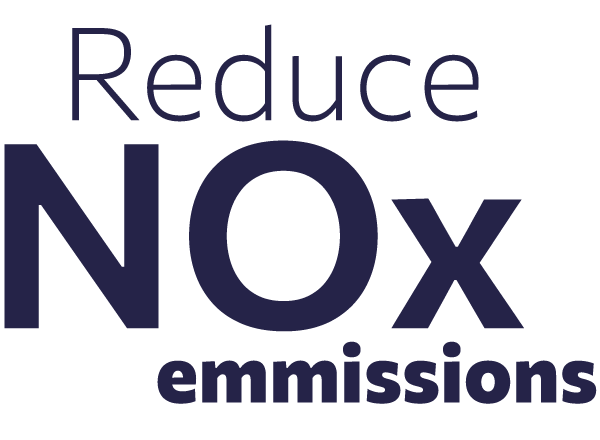Solutions to reduce greenhouse gas in shipping
Propulsion Modifications
Propulsion modifications are a cost-effective way to reduce NOx emissions from ships. One option is to improve the fuel efficiency of the ship’s engine, which reduces the amount of fuel burned and the resulting emissions. Another option is to install a propulsion system that uses electricity or hydrogen as a fuel source, which eliminates the emission of NOx and other pollutants.
Re-powering to Stage 5 Engines
Re-powering to Stage 5 engines is another option for reducing NOx emissions. Stage 5 engines are the most advanced and efficient diesel engines available and are designed to meet strict emissions standards. By replacing old engines with Stage 5 engines, ships can significantly reduce their NOx emissions and improve fuel efficiency.

Alternative Fuels like H2 and methanol
Alternative fuels like hydrogen and methanol can also be used to reduce NOx emissions from shipping. Hydrogen is a clean fuel that produces no emissions when burned, making it an ideal option for reducing the environmental impact of shipping. However, hydrogen fueling infrastructure is not yet widely available, and the cost of producing and transporting hydrogen is currently high.
After-treatment Systems like SCR-Units and Scrubbers
After-treatment systems like SCR-units and scrubbers are another option for reducing NOx emissions from ships. SCR-units use a chemical reaction to convert NOx into harmless nitrogen and water, while scrubbers use water and chemicals to remove pollutants from exhaust gases. Both options are effective at reducing NOx emissions, but they require significant upfront investment and ongoing maintenance.
In conclusion, Marimecs offers several options for reducing NOx emissions from shipping, including propulsion modifications, re-powering to Stage 5 engines, alternative fuels like H2, and after-treatment systems like SCR-units and scrubbers. Each option has its advantages and disadvantages, and the best solution will depend on the specific needs and requirements of the ship and its operators. However, reducing NOx emissions from shipping is essential for achieving global climate goals and protecting human health and the environment, and Marimecs is committed to providing sustainable and innovative solutions for the maritime industry.
Reducing NOx emissions by hull optimization
Another effective method for reducing NOx emissions from shipping is hull optimization through CFD analyses. Computational Fluid Dynamics (CFD) is a simulation tool used to analyze the fluid flow around a ship’s hull and identify areas of high resistance that contribute to increased fuel consumption and NOx emissions.
By analyzing the hull with CFD, Marimecs can identify areas of the ship that can be optimized to reduce resistance and improve fuel efficiency. This may involve modifying the hull shape, optimizing the placement of appendages such as rudders and stabilizers, or adding special coatings to reduce friction.
Hull optimization through CFD analyses can result in significant fuel savings and reduce NOx emissions by reducing the amount of fuel burned. Additionally, it can improve the overall performance of the ship, including speed and maneuverability.
In conclusion, hull optimization through CFD analyses is an effective method for reducing NOx emissions from shipping. By optimizing the hull shape and reducing resistance, Marimecs can significantly reduce fuel consumption and emissions, contributing to a more sustainable and environmentally friendly shipping industry.

Marimecs for sustainable modifications and newbuilt projects
By offering a comprehensive range of solutions, Marimecs is committed to contributing to a more sustainable and environmentally friendly shipping industry, updating the existing fleet and in newbuilt projects.
Do You have the ambition to reduce your footprint, call on our engineers and we can assess your vessel or newbuilt project to find the most suitable solution.

